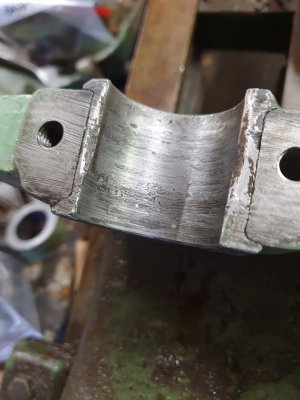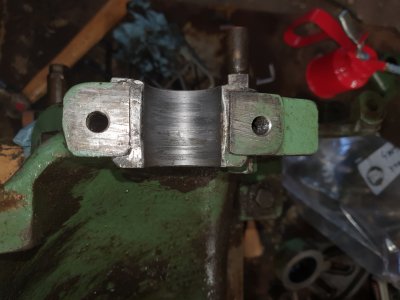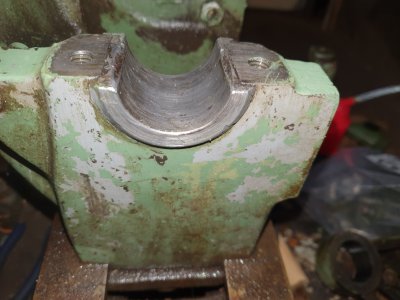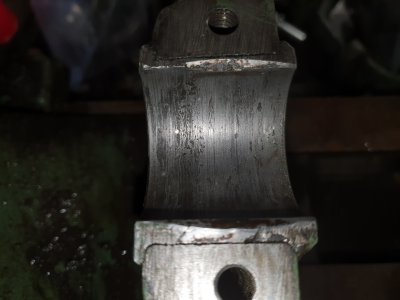That looks like what you'd expect to see in any babbitt Atlas. The good news is your contact surface area looks reasonable, for what it is. The bad news is you are out of shims, meaning no adjustment is possible unless you do something rash like grind the saddles and caps. What you should do first is measure all degrees of spindle play in as-found condition. With these bearings, you can develop axial-vertical and axial-horizontal deflection because the cutting tool pushes up and back. So measure those deflections and see if you can live with them. If you can't, finding a Timken head will get you going. I'm not in the least bit interested in spending my weekends fumbling like Mr. Magoo pouring babbitt into an Atlas head. Disclaimer: I own a babbitt bearing Atlas with a little too much wear, and it does okay, except once in awhile, when it doesn't.






